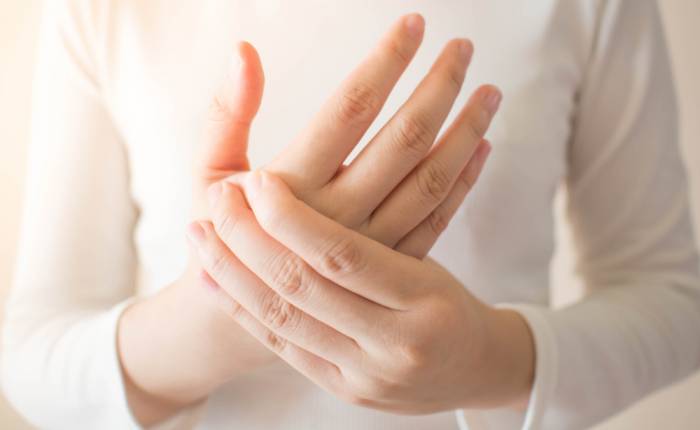Rheumatoid arthritis (RA) is a chronic autoimmune condition primarily affecting your joints. It causes your body’s immune system to attack healthy synovium. Synovium is the lining of the membranes that surrounds your joints. RA causes inflammation, pain and stiffness, which can have a significant effect on your quality of life. RA is a chronic condition that can cause permanent joint damage. RA most commonly affects the joints like the hands, wrists and knees. It can also impact other organs. Medications are frequently the primary choice for treating and managing RA; however, physical therapy can be a beneficial supplemental treatment.
The impact of rheumatoid arthritis on daily life
Rheumatoid arthritis affects about 18 million people worldwide as of 2019. Women are two to three times more likely to get RA than men. Living with rheumatoid arthritis can cause significant challenges to your daily life. The symptoms, including joint pain, swelling and stiffness, can interfere with your ability to do routine activities. Tasks you once took for granted, like dressing, cooking or even walking, can be overwhelming. RA can also be associated with fatigue. Fatigue can have an additional impact on your quality of life.
The multifaceted approach to treating rheumatoid arthritis
Rheumatoid arthritis is a complex condition that can involve a variety of approaches to treat it. While medications like disease-modifying antirheumatic drugs (DMARDs) are commonly used to help manage symptoms and slow down the disease, nondrug treatments like physical therapy can also be helpful.
The role of physical therapy for rheumatoid arthritis management
Physical therapy should be included in a comprehensive care plan for rheumatoid arthritis. It aims to improve joint function, reduce pain and improve overall mobility. The goals of physical therapy for rheumatoid arthritis can include:
- Pain management — Physical therapists use various techniques intended to help alleviate pain. These techniques can include manual therapy techniques like soft tissue mobilization and joint mobilization. They can also teach pain management strategies to empower you in coping with chronic pain.
- Joint mobility — RA can cause joint stiffness and limit your range of motion. Physical therapy interventions aim to help improve your joint mobility through targeted exercises and stretches. It can also help prevent deformities.
- Muscle strength — Strengthening exercises tailored to your individual needs and condition severity can help support affected joints, reducing stress and improving overall muscle strength.
- Posture and body mechanics — Education on proper body posture and mechanics can help minimize stress on joints during daily activities, contributing to your long-term joint health.
- Functional independence — Improving your ability to perform daily tasks, like dressing, cooking and self-care, is a crucial aspect of physical therapy for RA treatment and management.
Types of physical therapy interventions for rheumatoid arthritis
Physical therapy can include a diverse range of interventions for rheumatoid arthritis management. This multifaceted approach can provide personalized care that addresses individual needs depending on the affected area and severity of the condition. Types of physical therapy modalities that can be beneficial include:
- Therapeutic exercises — Tailored therapeutic exercises are designed to help improve muscle strength, joint stability and overall functionality. These exercises aim to help address specific limitations associated with rheumatoid arthritis, promoting better mobility and improving quality of life.
- Manual therapy — Skilled physical therapists use hands-on techniques to target soft tissue aiming to reduce inflammation, improve flexibility and alleviate discomfort associated with rheumatoid arthritis. The Graston Technique® is a manual therapy technique used by certified physical therapists. Your physical therapist will use specially designed stainless steel instruments that can help improve your range of motion, which can be impacted by rheumatoid arthritis inflammation.
- Active Release Techniques® — Active Release Techniques is a beneficial soft tissue mobilization treatment that can help reduce inflammation and pain associated with rheumatoid arthritis.
- Electrical stimulation — Electrical stimulation is used in physical therapy for rheumatoid arthritis to help alleviate pain and improve muscle function.
- Aquatic therapy — Buoyancy in water can reduce the impact on joints affected by rheumatoid arthritis. Aquatic exercises can help improve strength, flexibility and overall joint function.
- Joint protective strategies — Your physical therapist can educate you on ways to protect your joints. This can include proper body mechanics and using adaptive strategies or devices to help minimize the stress on affected joints in daily activities.
- Patient education — Your physical therapist can also provide you with information about your condition. They can discuss how it’s progressing and how to incorporate any self-management strategies.
The success of physical therapy in managing RA lies in its personalized and collaborative nature. Your physical therapist can work with you to understand your specific challenges, goals and preferences. Your plan will continually adjust based on your responses to interventions and the evolving nature of your condition.
Embrace a comprehensive treatment approach to RA with SOL Physical Therapy
At SOL Physical Therapy, we understand the complexities of RA and the comprehensive approach it needs to provide you with the best care. While medications play a pivotal role, integrating physical therapy can also significantly improve your overall well-being. We can help address your pain, improve your joint function and promote your independence.
Call us or request an appointment today to learn how incorporating physical therapy into your RA management can help you live a more fulfilling life.


